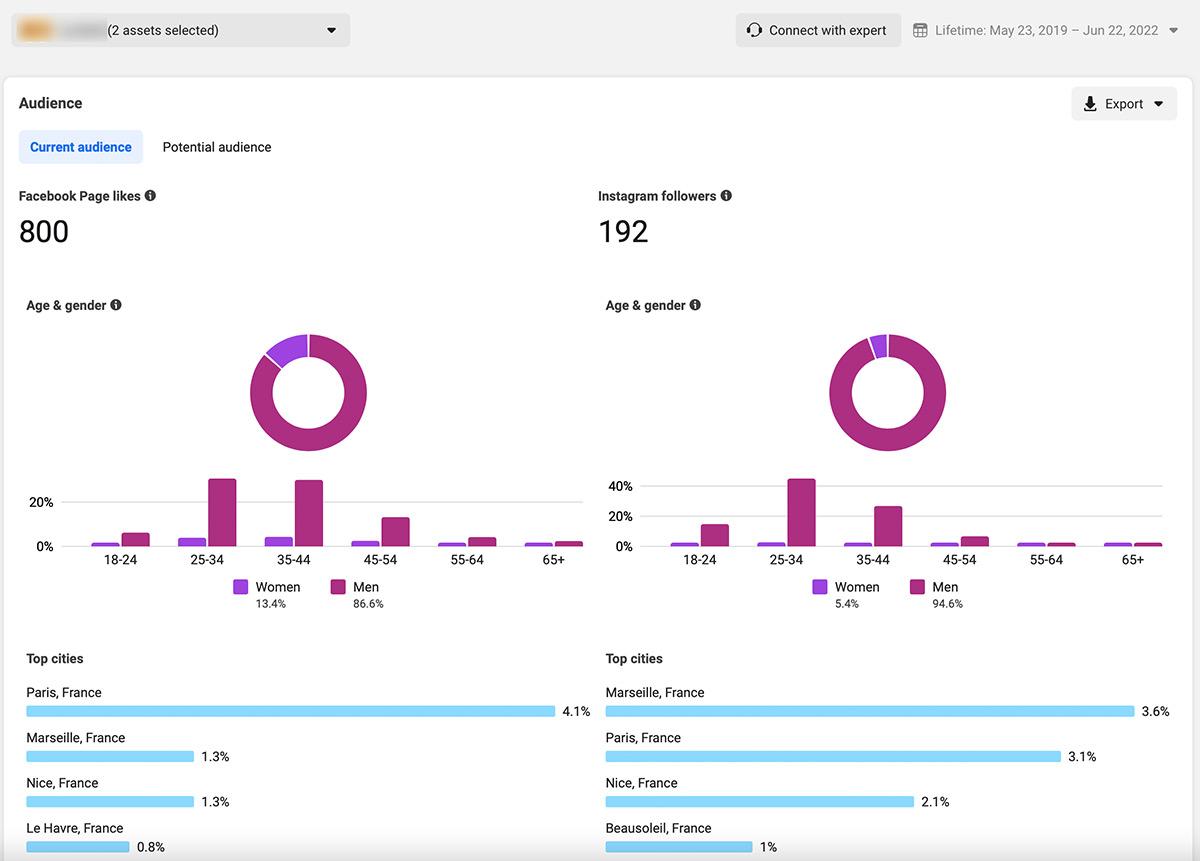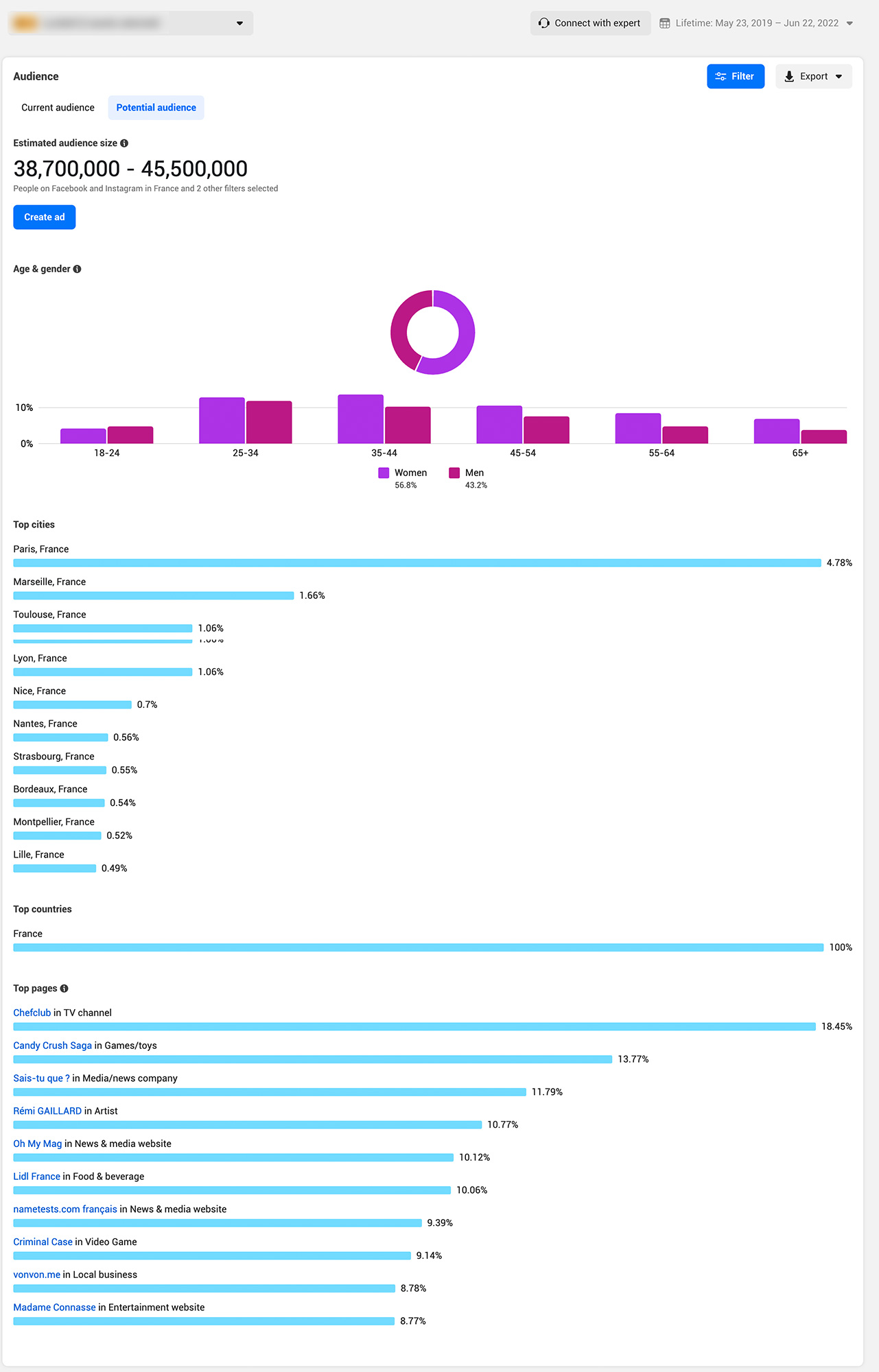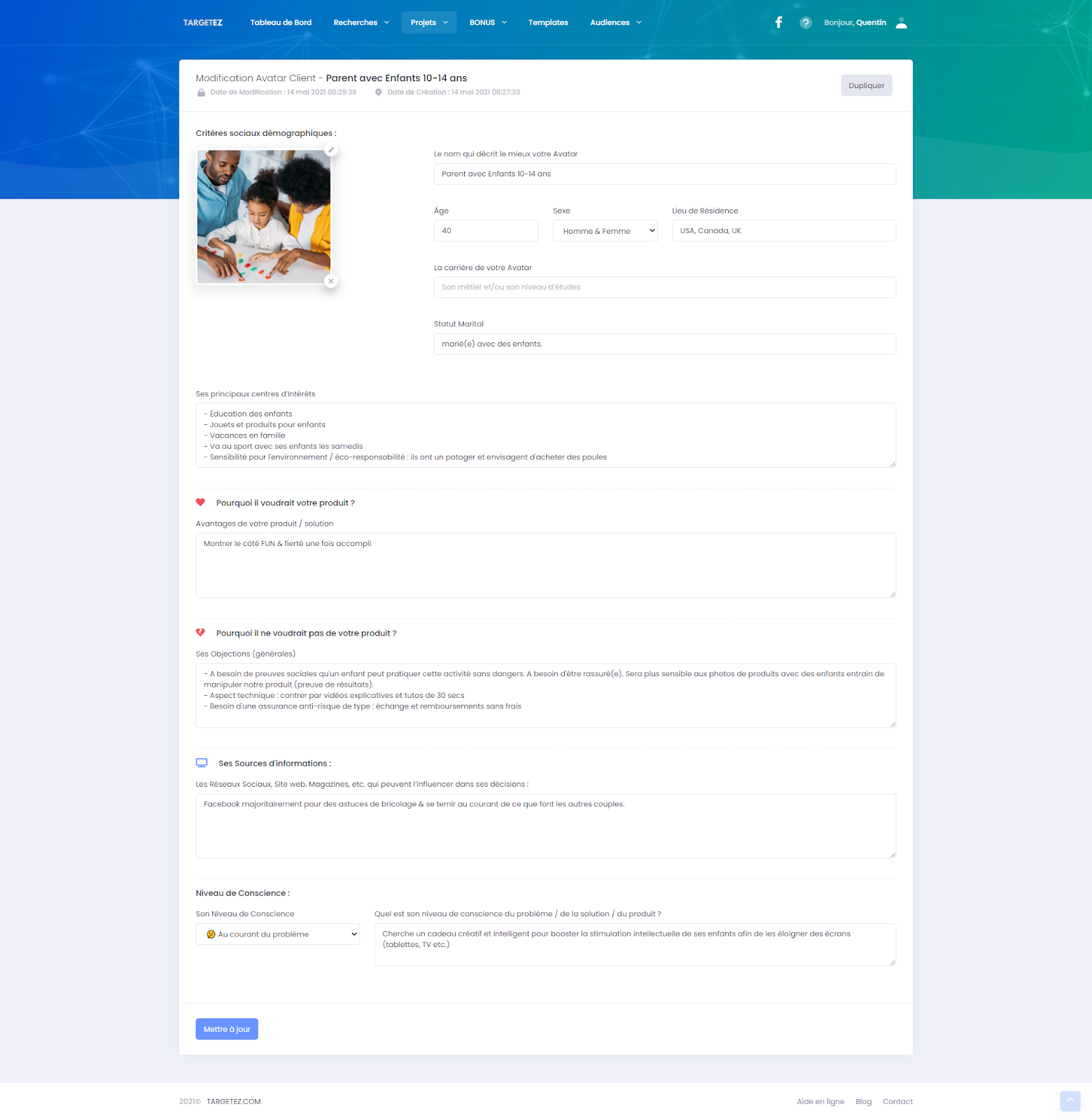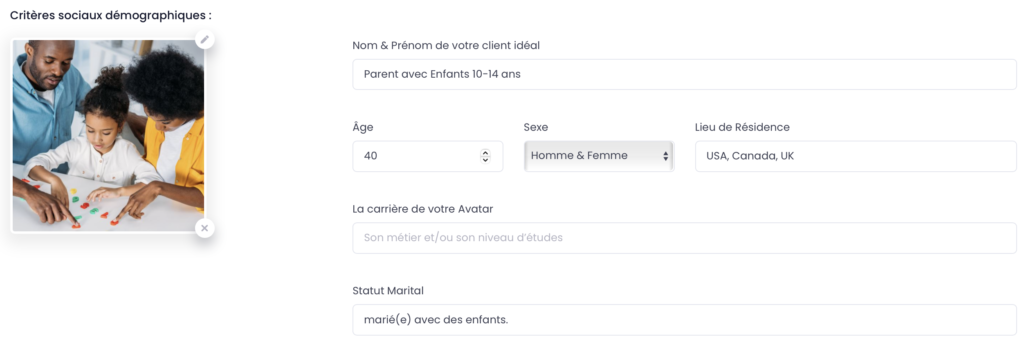You could have the best product in the world, but if you try to sell it to the wrong person, you won't sell it.
Selling a Ferrari to someone who wants to buy a bike won't work!
Entrepreneurs are often obsessed with the product they are selling and forget WHO they are selling to.
❌ They are convinced that everyone will want to buy their product.
But when you say "I want to sell my product to everyone": you have a 99.9% chance of selling it to the wrong person. And it doesn't matter if your budget is $1000 or $100K...
In this article, we are going to talk about the persona buyer method which allows you to segment your customers according to their expectations and needs.
A persona buyer or customer avatar represents a group of individuals whose motivations, behaviors and expectations are identical or very similar.
Simply put, the customer avatar is a fictional representation of your ideal customer.
It is the person you need to target in order not to waste your marketing efforts.
Why do I need a customer avatar?
Focusing on your ideal customer will greatly improve the way you address your customers.
You will see, it will be so much easier to address your customers in all your communication.
But a word of advice: don't try to create 10 customer avatars at once, you'll go crazy.
Create them, one at a time.
It's an iterative process anyway.
Don't try to have the perfect customer avatar on the first try and don't spend too much time on it either!
Creating a customer avatar (or persona buyer) of your ideal customer offers several advantages:
- Having a more lasting relationship between you and your customers. In the end, you will increase the customer lifetime value (LTV)
- Create more engaging and impactful content. Your prospects will be able to interact more instinctively with your publications, your emails will be read with more attention because they will resonate with your avatar. And your ads will feel like you are "talking" directly to your audience.
- Improve the targeting and effectiveness of your ad campaigns. You don't want to waste your money on the wrong targets!
- Attract higher quality leads: Your communication style has a huge impact on the type of leads you attract. If your communication is very focused on materialism and exotic cars, chances are you'll attract men under 25.
- Optimize your investments and increase your revenue
Now that we've seen why it's important to create a customer avatar, let's talk about the information sources needed to assemble one or more customer avatars.
The 2 sources to create your customer avatar
To establish a first customer avatar you can start from your existing customers or your potential prospects.
1) You already have customers:
a) Use your current data: start with your customers' information from your CRM or your database to establish your customer avatar.
b) You can also use Audience Statistics (Facebook Audiences Insights) from your ad manager and Google Analytics to learn more about your audience such as their interests, age range, gender, location etc.
c) Conduct interviews and questionnaires with your customers to find out why they bought and how to adapt your product to address more unresolved issues. We recommend you use google forms or typeform for your surveys.
2) You don't have any customers yet:
a) Analyze your competition's communication such as their ads, affiliate programs, sales page copywriting, photos...
b) Use Facebook groups, forums, Quora, Amazon to read the comments of your potential prospects. Chances are they will leave their opinion.
The 6 ingredients to create a customer avatar :
- Identity
- Demographic information
- Goals and values
- Challenges and pain points
- Objections
- Sources of information
TargetEZ saves you time and contains a customer avatar creation module. Let's look at these 6 ingredients in detail.
1) Identity
Give your ideal client a first name according to his age and a photo.
To find the first name, start with the age range and look at the most common first names at that time.
Or do the opposite, if the same first name appears several times in your customer base, use a predictive tool of the age according to the first name entered.
2) Demographic information
Demographic information includes age, gender, place of residence, level of education, income...
This allows you to adapt your advertising message according to the age, education level or the place where your ideal customer lives.
Use Facebook Audience Insights in your ad manager
Facebook Audience Insights is a free tool that allows you to learn more about your current audience or a potential audience.
By analyzing your current audience, you'll discover which age group follows your Facebook and Instagram page the most:

The "Potential Audience" section gives you the opportunity to study the demographics of people interested in a particular area of interest:

Please, read our complete guide of Audience Insights to learn more on how to use Facebook Audience Insights 😉
Use Google Analytics
To learn more about your current audience, you can also use your Google Analytics.
PRO TIP: If you have city names look at what your ideal client's city looks like on Google Maps or from the #cityname on Instagram. It may give you some ideas 😉
3) Goals and values
In terms of your ideal client's goals, you need to think about what your ideal client wants to achieve, what problem they want to solve and what needs they want to satisfy.
Also try to find out what values he may have. Example of values: ecology, simplicity, speed, contribution etc.
Knowing the goals and values of your ideal client will allow you to better approach them.
4) Challenges and pain points
Pain points are among the most important sections when you are in sales.
Clearly defining your ideal client's pain points and challenges will allow you to create clear creative and copy that will move them to action.
Having several pain points will allow you to identify several advertising angles that will be an important prerequisite when scaling your campaigns (some angles are exhausted).
Example of challenges and pain points: find a Christmas present for your grandson, lose weight and prepare his summer-body, acquire more leads/traffic, book more prospecting meetings, increase the response rate etc.
5) Objections
Why would your ideal customer not want your product?
Defining the objections and countermeasures will significantly improve your conversion rate and profits 😉
Example objections: price, delivery, "what's the proof?", "who else uses it?"
6) Information sources
Information sources are very important for your targeting.
Asking yourself questions about your ideal customer's browsing habits will help you to better orient yourself:
- What websites does he visit?
- What magazines and books do they read?
- What authority figures do they follow in their industry?
- What social networks does your ideal client use?
To help you answer these questions, try answering them by saying to yourself, "My ideal client IS THE ONE who follows/reads/visits/participates in this type of magazine/book/website/conference."
If your ideal client is a 65-70 year old, retired hunter, his or her sources of information may be primarily hunting magazines...
Example of a customer avatar:
Parent with Children 10-14 years old
This is the "Parent with Children 10-14" customer avatar that was created in TargetEZ.
The goal was to target parents to sell them an educational toy for their child.

The TargetEZ customer avatar creation module that guides you through the creation of your persona buyers.
In this example the final customer avatar is set up like this:
Identity and demographic information:
Since we started with parents, we didn't put a specific first name for the two parents but a name like "Parent with Children 10-14". The photo was found in an online image bank (Shutterstock).
The age of our client avatar must be 40 years or older, male or female and their place of residence in North America (USA or Canada) or England.
The marital status of our client avatar is married with children.

Objectives & values
What do parents want to achieve through the purchase of an educational toy for their child?
We have identified this objective:
"They are looking for a creative and smart gift to boost their children's intellectual stimulation to keep them away from screens (tablets, TV etc.)"
What might be the parents' values and interests?
- Children's education
- Toys and products for children
- Family vacations
- Go to sports with their children on Saturdays
- Environmental awareness / eco-responsibility: they have a vegetable garden and are considering buying chickens
Challenges and pain points
One of the pain points we've been working on is getting their kids away from screens.
As a reminder, pain points can often allow you to create several advertising angles. In our example, we could also create an ad with another pain point like buying the toy as a Christmas present.
Objections
Among the reasons why our avatar would not want our educational toy for his child, we identified:
Needs social proof that a child can safely do this activity. Needs reassurance. Will be more sensitive to product photos with children handling our product (proof of results).
Technical aspect: counter with explanatory videos and 30 second tutorials
Need for an anti-risk insurance such as: exchange and refunds at no cost
Extract of the objections of our client Avatar made on Targetez
Excerpt from our Customer Avatar's objections made on Targetez
Sources of information
One of the main sources of information that we have identified is Facebook. Either through their acquaintances and friends who may also have children or because they belong to specific Facebook groups.
Have you already defined your customer avatars?
Tell us in the comments 👇
